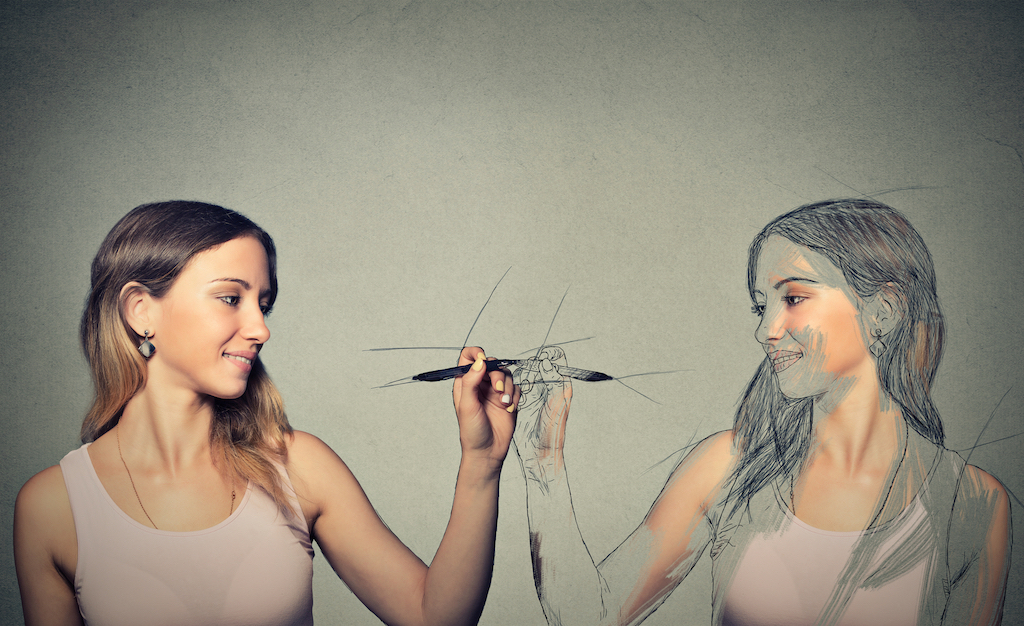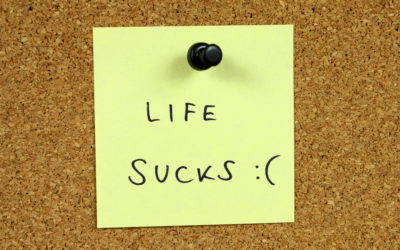But what if outsourcing isn’t a viable choice? If you can’t afford (or don’t want) to get someone else to do the bits of your work you don’t like doing, you probably do what most people do – procrastinate for as long as you possibly can, and then when your really have to do it, you get it over with in the least painful and quickest way you can think of. For example, Ben Cohen and Jerry Greenfield, the founders of Ben and Jerry’s ice cream, reportedly hated firing people so much that the only way they could do it was by thinking of their business as a monster. Before getting rid of a slow-scooping employee, they would go in the back of their restaurant and chant “the monster is hungry; the monster must eat”. Then they would begin to growl until they generated sufficient confidence to go out front and send their soon to be ex-employee packing.
While “getting it over with” is certainly more productive than never getting to something in the first place, it’s certainly not an efficient long-term strategy. And things done with a white-knuckle “just gotta’ get through it” frame of mind rarely go as well as they could. So what’s the alternative?
Simple. Begin to like everything you do.
Now at first glance, this seems to be a patently ridiculous idea. After all, how do I make myself enjoy catching up on a backlog of email, making cold calls, asking the bank for money, or whatever part of my work I think of as a “necessarily evil”? But what we like and dislike – i.e. our preferences – are not written in stone. In fact, most of them are the somewhat arbitrary result of childhood incidents, cultural conditioning, and psychological reinforcement.
As a girl, my wife was forced to drink warm milk that had been sitting in the sun in the school yard and it made her physically ill. That experience was passed on to our kids, who grew up hating milk without ever really having tried it. But in my house, we grew up enjoying milk in our breakfast cereal, milk with our after-school snacks, and a glass of milk with our dinner. And my sister’s adult children still drink milk every day. The point, of course, isn’t whether or not people should drink milk – it’s that so much of what we like or don’t like is based on limited or even second-hand experience, perpetuated unwittingly by the thought that “I don’t like that”.
Here’s another example:
Francine came to me for coaching on growing her new business. She felt she needed to get better at networking in order to get clients, but as she told me in no uncertain terms, “I hate networking. It’s fake, and it’s phony, and it’s just a bunch of people pretending to be interested in someone so they can make money from them.”
When I gently pointed out that it wasn’t surprising that someone who thought networking was evil wouldn’t be terribly good at it, she upped the stakes by making her preference a character issue.
“I’m just not the kind of person who can lie, even when it would be in my own best interests. I’ve tried to fake being interested in people in the past, but it’s just not me!”
While the amateur psychologist in me wanted to dive into the content of pretty much everything she said, the professional coach in me knew that the solution wasn’t in the specifics of her thinking but in her misunderstanding of how Thought works. Thought is the paint with which our reality is created. We think and speak that paint onto the canvas of our consciousness, and then experience the painting as if it’s real. But no matter how many times you’ve painted the same picture, it’s still just one of a million possible pictures that could be painted on the blank canvas of the next moment. And no matter how “photo-realistic” your preferences look, they’re still made up and painted by you. They’re a representation of a possible reality – one tiny sliver of an infinite creative potential.
I told her the story of when the abstract painter Pablo Picasso was traveling on a train with a wealthy businessman who criticized his art as being “unrealistic”. When Picasso asked him to explain, he took out a photograph of his wife from his wallet. “This is my wife, as she is”, the businessman exclaimed. Picasso examined the photograph and then looked at the man wryly. “She’s very small, your wife. And a bit flat.”
My point was that we think we know what things are really like, but we only know what we think. And the wonderful thing about thought is that it can change in the blink of an eye.
Although Francine seemed a bit more settled when we had explored things for a bit, she was still uncomfortable with the idea that she was supposed to lie to herself and convince herself that she liked something that she didn’t. “I’m just shy by nature,” she explained.
“Are you?” I asked. “I’ve never met a shy baby. In fact, it seems to be completely natural for babies and small children to be indiscriminately fascinated by life. Which would at least suggest that enjoying everything is what’s natural and having strong preferences is learned somewhere along the way. What if you did your best to take all your thinking about networking off your eyeballs and came to it fresh?”
We spoke a few more times in the ensuing months, and she shared that to her surprise, she not only no longer hated networking, she found herself talking about her work with complete strangers on a regular basis and had picked up several new clients along the way. And this is the wonderful possibility for all of us – the realization that we’re not stuck with our acquired preferences and that we can return to our natural mode of indiscriminate enjoyment in any moment. Each time we get past our thinking and into whatever it is that we are doing, we learn more and do better. Over time, that indiscriminate enjoyment leads to less stress, less procrastination, and a natural boost in our productivity.
(A brief postscript. In the middle of writing this blog post, I stepped outside to discover that my dog had left a huge pile of poo outside my office door. After a brief flurry of thoughts about the relative merits of pet ownership and what a pain it was to have to clean up after a dog when I was trying to write important things about people passed through my mind, I laughed at myself and decided to see what it was like to enjoy cleaning up dog poo. Less than five minutes later, the whole area was cleaned up, hosed down, and looking better than it has in weeks. And I thanked my dog for the clearly carefully planned out reminder…)
With all my love,
![]()





